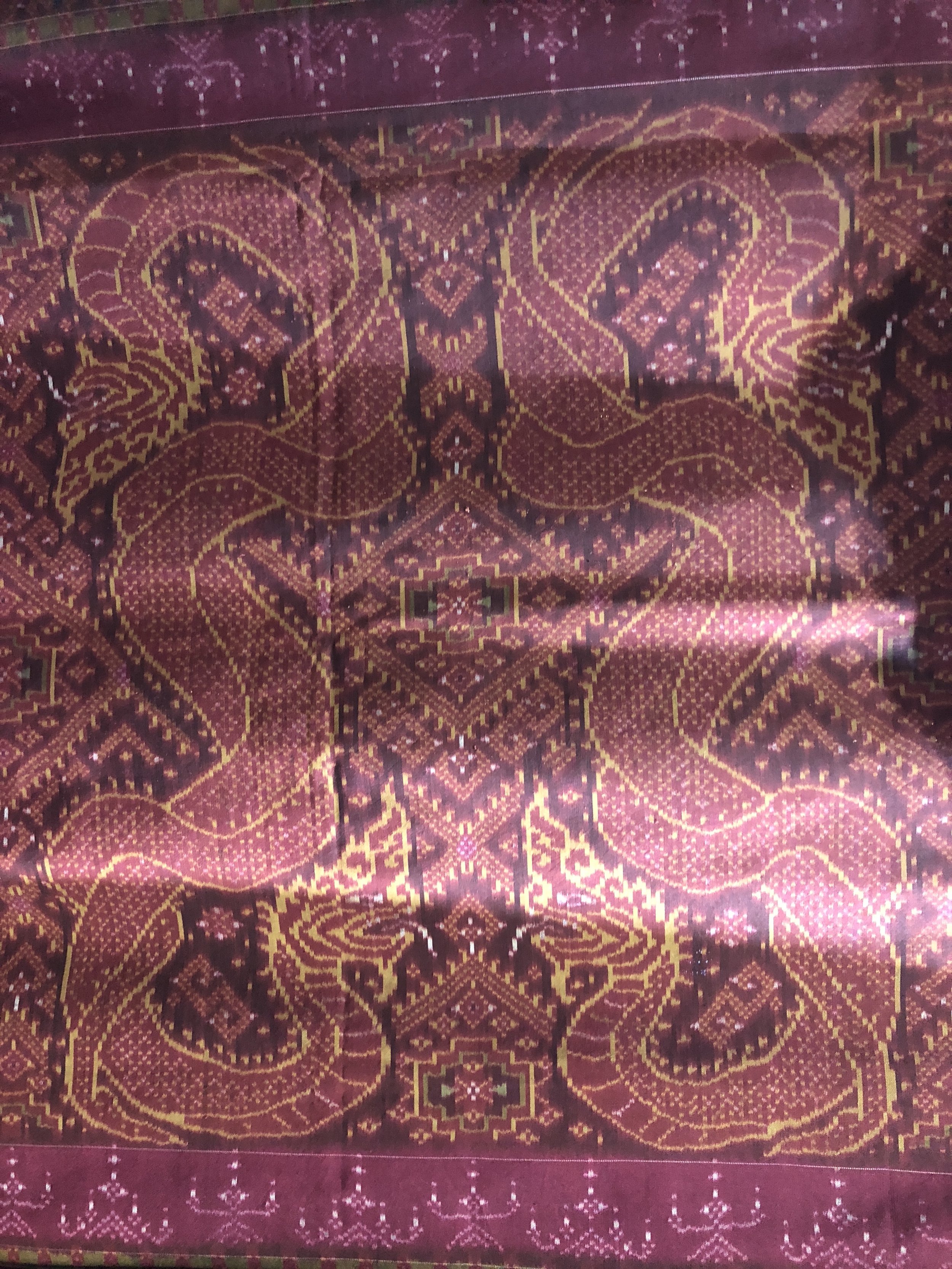Nagas in Knots: Silk Patterns as Conduits and Connections to Unseen Worlds
Alexandra DALFERRO (she/her)
Visiting Research Fellow, Thailand Studies Programme, ISEAS - Yusof Ishak Institute, Singapore
Silk textiles woven in Surin Province are recognized across Thailand for the complex matmi, or ikat, patterns they bear. Matmi patterns are achieved by tying hundreds of knots around bunches of threads to prevent color from seeping in, and then dyeing them in stages before they are woven. Weavers design and reproduce patterns combining realistic and abstract/symbolic interpretations of significant (super)natural elements, from local flora and fauna to divine creatures like the naga serpent. These patterns materialize histories and beliefs and mediate relations among humans and non-humans as they are knotted, woven, and then wrapped around bodies, presented as offerings to Theravada Buddhist monks, and used in a variety of rituals undertaken among members of Surin’s ethnically minoritized Khmer communities.
Drawing from over two years of anthropological fieldwork in Surin, I foreground the specifics of everyday engagements with matmi naga patterns. I consider the materiality, making practices, and representational capacities of matmi knots to explore the ways that silks with patterns deemed powerful or sacred become actors in their own regard. Naga motifs are common components of textile patterns across Southeast Asia, encapsulating the multivalent significances of these creatures and their ability to traverse and connect disparate realms. Nagas as such are not usually encountered in daily life, unlike other local aquatic critters like catfish, turtles, and eels, and therefore, human-generated representations of nagas become key sites for understanding their powers and predilections. When nagas slither onto silks in Surin, they bestow particular meanings to the cloths, and they require particular modes of gendered comportment from those who wear them on the body.
How should bodies bearing nagas behave? How should bodies who create nagas behave? What do the tying and wearing of naga silks have to do with relationships to local ecologies and the enmeshment of human and more-than-human beings? By considering these questions in this paper, I highlight the stakes of concepts of reduplication, abundance, ubiquity, and interdependence in relation to Theravada Buddhist worldviews. These Buddhist orientations inform and are informed by embodied, sensory experiences involving naga silks, and I follow the knotted matmi scales of the naga to discern tangles and patterns that are both visual and graphic, and cosmological and ideological.
Keywords: textiles, material/visual culture, nagas, sex/gender, Thailand
***
Alexandra recently completed her PhD in anthropology at Cornell University, and her dissertation is about the histories, politics, and practices of silk making among ethnically minoritized Khmer communities in Thailand. She is currently a visiting research fellow in the Thailand Studies Programme at ISEAS - Yusof Ishak Institute, and in July she will become a faculty member at NUS College in Singapore. Her research interests include material and visual culture, sensory ethnography, sex/gender in Southeast Asia, critical craft studies, and fashion studies.
